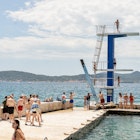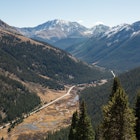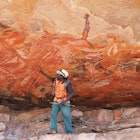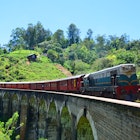
Aug 26, 2025 • 8 min read
If you're seeking spiritual well-being, nature or ancient spiritual traditions, you're in the right place. Here's how to enjoy your trip to Bali.

Aug 26, 2025 • 8 min read
If you're seeking spiritual well-being, nature or ancient spiritual traditions, you're in the right place. Here's how to enjoy your trip to Bali.

Aug 26, 2025 • 7 min read
Hike up beautiful mountains, admire Thomas Jefferson's Monticello, visit pastoral farmland and more. Here are the best ways to enjoy Virginia.

Aug 26, 2025 • 7 min read
From the tiniest tots to the tallest teens, Croatia has lots of attractions that delight the whole family. Here's how to plan your trip with the kids in tow.

Aug 26, 2025 • 12 min read
There are lots of things to see and do in Aspen, Colorado, from outdoor adventures to food and culture. These are 18 of the best attractions.

Aug 26, 2025 • 5 min read
Between its thriving art and live music scenes and its killer culinary cred, Milwaukee offers plenty to do on your next visit to Wisconsin's largest city.

Aug 26, 2025 • 8 min read
Rouen is the only city in France to be a UNESCO Creative City of Gastronomy.

Aug 26, 2025 • 9 min read
Australia is home to more than 100,000 significant Aboriginal rock art sites. Here are some of the best.

Aug 26, 2025 • 7 min read
From when to go to where to stay to what attractions not to miss, here’s a full guide to Legoland and Lego House in Billund, Denmark.

Aug 26, 2025 • 8 min read
See the highlights of Croatia with this week-long itinerary, perfect for first-time visitors.

Aug 26, 2025 • 6 min read
Cuba's top destinations delight travelers with music-filled cities, chill resorts and remote natural beauty.

Aug 26, 2025 • 9 min read
From history-themed journeys to fabulous wine tours and gorgeous hikes, you'll find it all in Slovenia. Here's our top 12 things to do.

Aug 25, 2025 • 7 min read
We've travelled far and wide to bring you the average cost of accommodation around the world.

Aug 25, 2025 • 8 min read
From popular honeymoon destinations to top dive sites, here are the best places to visit in the Caribbean.

Aug 25, 2025 • 7 min read
Snorkel in the Mediterranean, go caving in a grotto and meet wild donkeys in a national park. Here are the top ways to enjoy Sardinia.

Aug 25, 2025 • 5 min read
With trams, buses, the subway and even a free ferry service, Poland’s capital city is extremely easy to navigate.

Aug 25, 2025 • 6 min read
Puglia exemplifies the seductive allure of Southern Italy – plot your sojourn to pristine beaches, woodland trails, local feasts and other top highlights.

Aug 25, 2025 • 9 min read
The Island of Hawai'i is the largest island in the state of Hawai'i. Plan your visit with our first-time guide.

Aug 25, 2025 • 11 min read
Lonely Planet is staffed with people who are passionate about travel. These are their summer travel stories to help inspire your own.

Aug 25, 2025 • 11 min read
From street art to salsa dancing to lively markets, Bogotá brims with fabulous experiences. These are 13 of our favorite ones.

Aug 25, 2025 • 8 min read
Step beyond Japan's futuristic megacities to explore nature, science, history and culture on these small islands without the crowds.

Aug 25, 2025 • 6 min read
Our guide to transportation can help you plan the best way for your travels around Sri Lanka.

Aug 25, 2025 • 5 min read
There’s more to the Maldives than its world-famous beaches. Here are seven activities that will take you under, over and beyond the sand.